#LennoxLovers
Text

"ARI"
by
Jaevonn Harris™
#AriLennox#SheaButterBaby#Dreamville#AriLennoxMusic#SoulfulSounds#ArisVibes#RnBQueen#LennoxLove#AriSoul#AriLennoxFans#CognacQueen#AriLennoxLyrics#MelaninMagic#AriLennoxLive#AriandDreamville#QueenOfRnB#AriLennoxArtistry#AriLennoxStyle#LennoxLovers#AriOnRepeat#balenciaga#balenciaga eyewear
2 notes
·
View notes
Text

"ARI"
4" x 6"
by
Jaevonn Harris™
#AriLennox#SheaButterBaby#Dreamville#AriLennoxMusic#SoulfulSounds#ArisVibes#RnBQueen#LennoxLove#AriSoul#AriLennoxFans#CognacQueen#AriLennoxLyrics#MelaninMagic#AriLennoxLive#AriandDreamville#QueenOfRnB#AriLennoxArtistry#AriLennoxStyle#LennoxLovers#AriOnRepeat#black art#fine art#contemporary art#pop art#balenciaga#balenciaga eyewear
2 notes
·
View notes
Text

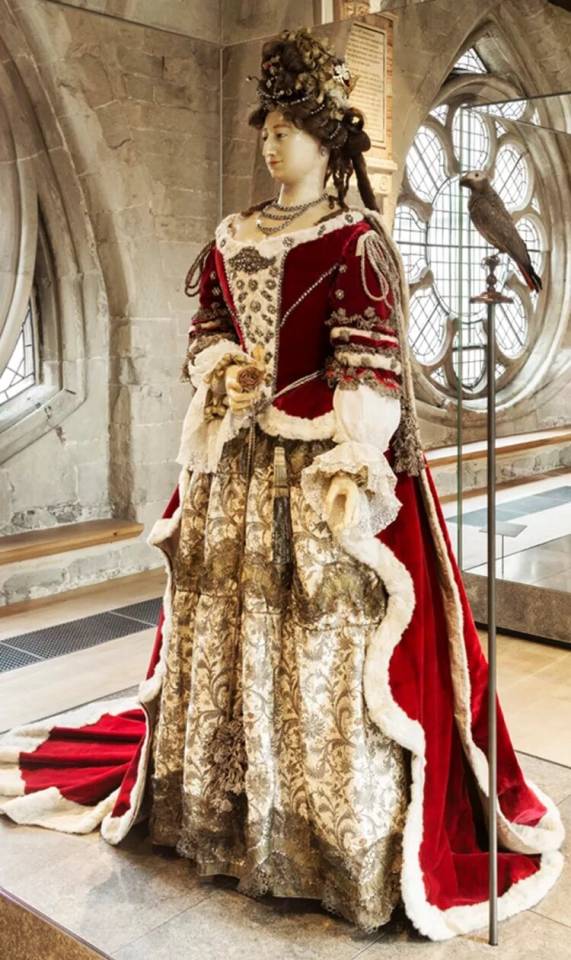
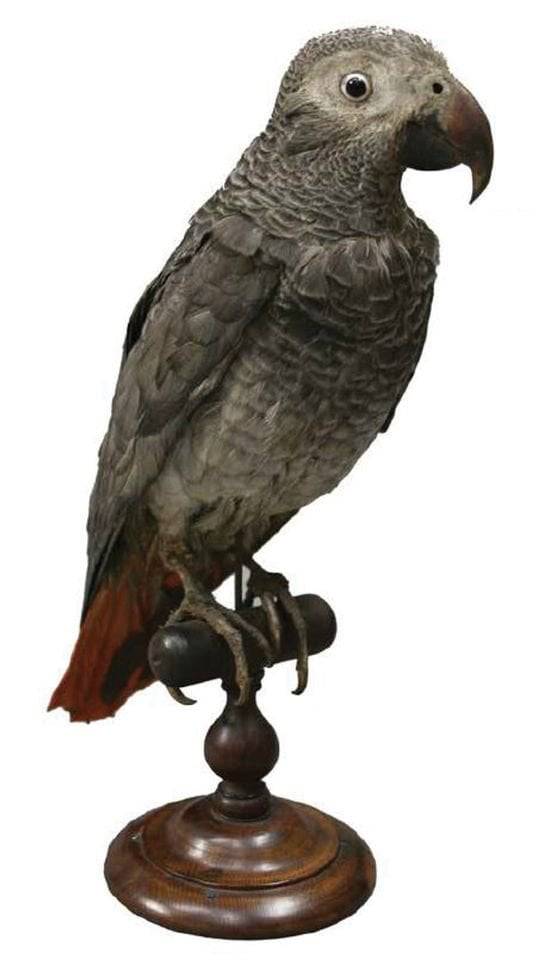
On 8th July 1647 Frances Stuart, Scottish aristocrat and mistress of Charles II, was born.
I always debate on whether events like this are truly relevant to be included in a post about Scotland, but I think the interest in the Stuarts in general is enough for this lady called “La Belle Stuart” to put a wee post together about, plus an oddity, you might notice in the second photo gives it a bit of added interest.
Frances Teresa Stuart was born in France the daughter of Walter Stuart (a distant relative of the royal house of Stuart) and his wife Sophia. She was brought up in France at the time the Stuarts were in exile on the continent. After the Restoration she returned with the Royal Court with her mother and was appointed maid of honour to Catherine of Braganza, queen of Charles II.
Samuel Pepys, the diarist, recorded that she was the greatest beauty he had ever seen. Frances had numerous suitors, eventually she eloped with Charles Stuart, a fourth cousin of the king and the 4th Duke of Richmond and 6th Duke of Lennox in March 1667. She fell out of favour at court for marrying without royal consent.
About 1669 she became seriously ill with smallpox and the king reportedly rushed to her bedside and forgave her for marrying. Upon her recovery, she was appointed Lady of the Bedchamber for the Queen.
The king appointed the duke ambassador to Denmark, but Frances stayed in England, managing the estate and business affairs. The duke died in December 1672 and as he had no heir his estates reverted to the Crown. Charles II granted Frances a 1000 pound pension per annum for life. In 1702 Frances arranged to purchase the estate of Lethington. She died that same year leaving her estate to her nephew Lord Blantyre who renamed Lethington Lennoxlove in her honour.
For me the most interesting wee snippets are that Frances had an wax effigy of herself made, which stood by the graveside until the early 19th century when, with several other wax figures, it was moved to the upper Islip chapel in Westminster Abbey, by her side is an African Grey parrot, who died a few days after her, it was her “companion” for 40 years, I have visions of it sitting on her should saying “pieces of eight!” Anyway the bird was stuffed and is perched beside her in the chapel, it is perhaps the world's oldest stuffed bird and looks quite the thing sitting next to her effigy don’t you think?
16 notes
·
View notes
Text
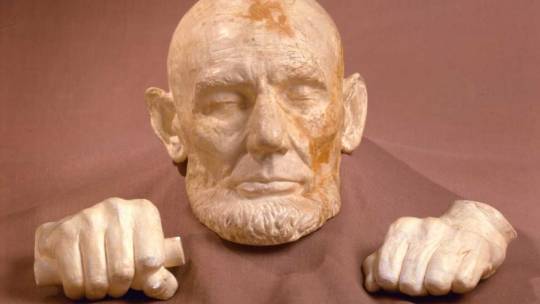
Volk, L. (1860). Abraham Lincoln. [Death Mask]. The Henry Ford Museum.
DEATH MASKS
The making of a death mask is a practice that has evidence of dating back as early as Ancient Egypt, over 5,000 years ago, where a mask is created of the deceased's face, either sculpted or directly cast, in order to preserve their image. The Ancient Egyptian process was to sculpt a stylised representation of the face of the dead, cast in gold with gemstone adornments, which was then placed on the mummified body of the individual in order to guard them from evil spirits in their journey to the afterworld. Roman death masks were cast directly from the face but while they were still alive, and used during funerals. This practice has maintained to the modern age, and has evolved into contemporary creative practice.
Historically, the process involves making a mold of the deceased person's face and sometimes other body parts like hands in plaster or wax, which is then cast in either plaster, wax, or bronze to create a statuette of the death mask. These masks were used for a variety of reasons, either for funerary practices, to create sculptures in the likeness of the individual, scientific purposes or even in unsolved criminal cases where the victim's unidentified face would be made as a death mask in order to display to the wider public for information and identification. In contemporary methods, alginate is used directly on the face, which then plaster bandages are layered on top in order to create a secure hard backing for the alginate so it can remain stable and not rip or fall apart.
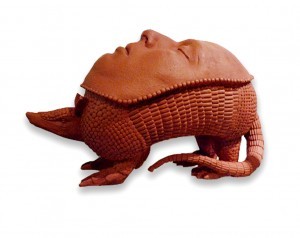
Reynolds, N. (2007). Death Mask of John Joe Armador. [Death Mask]. The Terrestrial.
Historic death masks directly cast have survived for hundreds of years, with some being over 500 years old. While there were many made of criminals, most have been made of famous individuals throughout the western world, with most surviving masks being from the 1700-1900's. Masks of Oliver Cromwell, Ludvig Van Beethoven, Abraham Lincoln and Napoleon Bonaparte still survive, with even two separate masks attributed to Mary Queen of Scots that are made in wax. Nick Reynolds, the son of British criminal Bruce Reynolds, is a sculptor who specialises in contemporary death masks. He has made the mask of his own father. His death mask of John Joe Armador, a man who was executed by lethal injection for his conviction of armed robbery and murder, was made into a sculpture in protest against capital punishment in the United States. We also have the work of Neri Oxman as featured in my artist research, a bioartist/designer who has worked on three series of Vesper masks. These masks are 3D printed from grown biological material and while each series has a slightly different intention, but are linked in that "Each mask represents an imaginary martyr going through a metamorphosis from life to death or death to life".
I feel that the death mask is such a heavy and significant symbol of death objects and liminality. The visage, especially when preserved after death of the individual, retains the person's image for eternity and exists in the physical world with a presence that is not matched by many other types of objects in this realm. In the way that a human skeleton or skull evokes curious perception of the individual past their lifespan, the death mask is the face itself, and tells a story of their life and death such a visceral way. While death masks have been used as a way to immortalise figures of their time, they also mirror the practice of the reliquary, where an important religious figure's remains are enshrined or entombed within ornate housing to be displayed within their place of worship. This link within religious iconography, death and the shrine are some very interesting threads that I would like to follow to continue from last year.
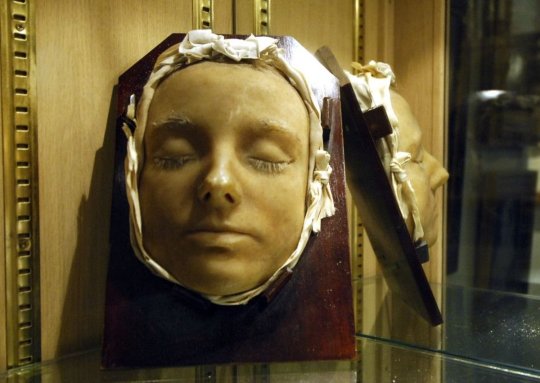
Unidentified Maker. (1587). Death Mask of Mary Queen of Scots. [Death Mask]. Lennoxlove House.
1 note
·
View note
Photo

History Behind the film “Mary, Queen of Scots”:
Mary, Queen of Scots was executed on the 8th of February, 1587, some historians point out that her execution was what led to the Anglo-Spanish war that dragged on for decades until the Kings of Spain and England, who inherited this from their predecessors, put an end to it via a treaty.
Initially, Mary Queen of Scots was buried at Peterborough Cathedral and given a Protestant funeral service. When her son James VI of Scotland became I of England, he reburied his mother at Westminster Abbey in the chapel next to the joint tomb of her fellow rival (Queen Elizabeth I of England) and her sister (Mary I of England).
In this collage, I included a copy of her death mask (which is currently located at Lennoxlove House) at Falkland palace in Scotland. The first tomb on the upper left hand corner is of that of Mary Stuart's at Westminster Abbey, the one on the bottom is also the same, only the picture was taken from above.
5 notes
·
View notes
Photo
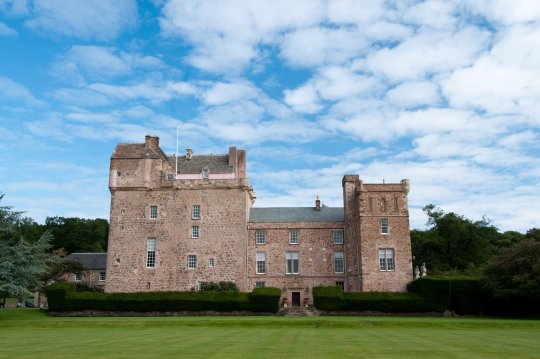






LENNOXLOVE HOUSE -- A-LISTED HISTORIC HOUSE SET IN WOODLANDS HALF A MILE SOUTH OF HADDINGTON, EAST LOTHIAN. IT IS THE SEAT OF THE DUKE OF HAMILTON AND DESCRIBED BY HISTORIC SCOTLAND AS “ONE OF SCOTLAND’S MOST ANCIENT AND NOTABLE HOUSES”.
0 notes
Text
Observer archive: bidders at Sotheby's, 25 February 1954
Jane Bown visited the London auction rooms and returned with this beautifully composed photograph
This photograph was printed on page one of the Observer on 28 February 1954, accompanied by the caption: “Incongruous and irreverent; bidders make themselves at home in Messrs. Sotheby’s auction-rooms in Bond-street for an important sale of silver. The Lennoxlove toilet service, which originally belonged to one of Charles II’s favourites, went for £17,000 to the Royal Scottish Museum. Another piece, the ‘Galloway Mazer’, made by a Scottish craftsman in 1569, fetched £11,000.”
Continue reading...
https://www.theguardian.com/theobserver/2019/feb/23/observer-archive-bidders-at-sothebys-25-february-1954
0 notes
Text
Observer archive: bidders at Sotheby's, 25 February 1954
Jane Bown visited the London auction rooms and returned with this beautifully composed photograph
This photograph was printed on page one of the Observer on 28 February 1954, accompanied by the caption: “Incongruous and irreverent; bidders make themselves at home in Messrs. Sotheby’s auction-rooms in Bond-street for an important sale of silver. The Lennoxlove toilet service, which originally belonged to one of Charles II’s favourites, went for £17,000 to the Royal Scottish Museum. Another piece, the ‘Galloway Mazer’, made by a Scottish craftsman in 1569, fetched £11,000.”
Continue reading...
from Photography | The Guardian https://ift.tt/2Tbrqqd
0 notes
Photo


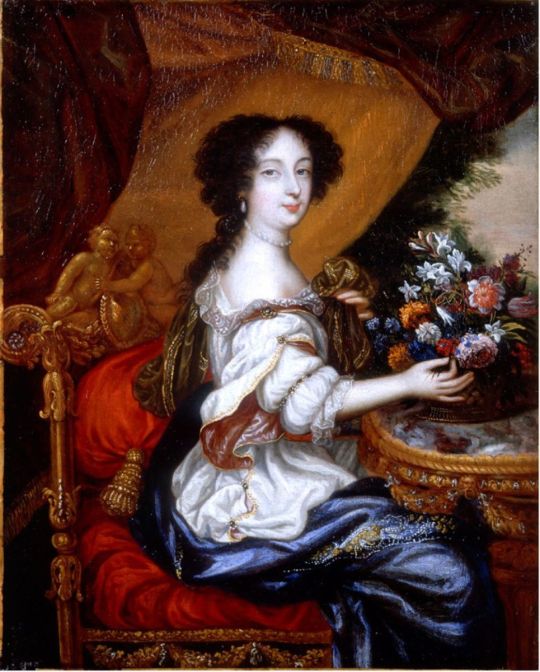

On 8th July 1647 Frances Stuart, known as “La Belle Stuart” was born.
Frances was the daughter of Walter Stewart, or Stuart, a physician in the court of Queen Henrietta Maria, wife of Charles I who was in exile in France.
When the Stuarts returned to the throne with the Restoration she went with them. In 1662, she became a Maid of Honour to Charles II's bride, the Infanta of Portugal, Catherine, and then a Lady in Waiting to the new Queen.
Reportedly, Charles became infatuated with the girl, but she resisted his advances. In 1664, after England won several naval victories against the Dutch, the king had medals struck depicting the figure of Britannia, he chose Frances for the model. The King was so besotted with her that he considered divorcing Catherine to marry her. Samuel Pepys, the diarist, recorded that she was the greatest beauty he had ever seen.
Considered a great beauty, she had numerous suitors, eventually she eloped with another Charles Stuart, a fourth cousin of the king and the 4th Duke of Richmond and 6th Duke of Lennox in March 1667. She fell out of favour at court for marrying without royal consent.
About 1669 she became seriously ill with smallpox and the king reportedly rushed to her bedside and forgave her for marrying. Upon her recovery, she was appointed Lady of the Bedchamber for the Queen. The king appointed the duke ambassador to Denmark, but Frances stayed at home, managing the estate and business affairs.
The duke died in December 1672 and as he had no heir his estates reverted to the Crown. Charles II granted Frances a 1000 pound pension per annum for life. In 1702 Frances arranged to purchase the estate of Lethington. She died that same year leaving her estate to her nephew Lord Blantyre who renamed Lethington Lennoxlove in her honour.
Pics include two paintings of “La Belle Stuart” and a remarkable wax effigy she ordered that had made of herself dressed in her coronet, robes and shoes worn at Queen Anne's coronation,. She had it set up in Henry VII's chapel near the grave of Ludovic Stuart, cousin of James I, in Westminster Abbey, the effigy survives and beside it you will see an African Grey parrot, which was her “companion” for some 40 years, the parrot died a few days after her.
As seen in the last pic, very few mounted bird specimens survive from this period but x-rays show that the entire skeleton of the bird is intact including its skull. This was a very primitive technique but the parrot probably survived because it was kept in a showcase. It is perhaps the oldest stuffed bird in existence.
16 notes
·
View notes
Photo





On November 4th 1864 Robert Stodart Lorimer was born.
Lorimer was born in Edinburgh, the son of James Lorimer, who was Regius Professor of Public Law at Edinburgh University from 1862 to 1890. He was educated at Edinburgh Academy and later at Edinburgh University. He was part of a gifted family, being the younger brother of painter John Henry Lorimer, and father to the sculptor Hew Lorimer. In 1878 the Lorimer family acquired the lease of Kellie Castle in Fife and began its restoration for use as a holiday home.
Robert Lorimer began his architectural career in 1885 working for Sir Robert Rowand Anderson in Edinburgh, and in 1889 for George Frederick Bodley in London, returning to Edinburgh to form his own practice in 1891 with his first major restoration commission at Earlshall in Fife for a friend of his parents.
He was influenced by Scottish domestic architecture of the 16th and 17th centuries and the Scots Baronial style of Kellie Castle where he had spent much time as a young man. From his time in Bodley's office, Lorimer was influenced by the ideas of William Morris, and went on to become a committed exponent of the Arts and Crafts approach to architecture. He assembled a collaborative group of artists and craftsmen who, collectively, often contributed to his various commissions and to the manufacture of furniture sent to the Arts and Crafts exhibitions in London. In 1896 he was elected to the Art Workers Guild.
Lorimer designed a series of cottages in the Arts and Crafts style in the Colinton area of Edinburgh, the so-called "Colinton Cottages". Constructed using traditional methods and materials, each cottage included a garden layout and interior design, including furniture, in keeping with the Arts and Crafts concept. By 1900, eight cottages had been built and four others were under construction.
As his reputation grew the scale of his commissions increased, including major alterations and additions to important houses in various styles, culminating in three entirely new country houses designed in his personal interpretation of Scots Baronial; at Rowallan, Ayrshire, Ardkinglas, Argyllshire, and Formakin, Renfrewshire. Of these, Ardkinglas, on Loch Fyne was the only one built as originally designed and, Lorimer having been given carte blanche, represents his masterpiece.
His important restorations at this time include Lennoxlove House, Haddington and probably his most evocative; at Dunderave, Argyllshire on the Ardkinglas estate. He could take a house of modest character and give it a strong personality, such as Pitkerro, Forfarshire or Briglands, Kinross, particularly where he found the raw materials sympathetic, but he could also disregard existing architectural qualities in a way that modern conservation practice would question, if he felt the result justified its replacement, such as at Hill of Tarvit, Fife where he demolished a previous house probably by Sir William Bruce, or at Marchmont, Berwickshire where he re-configured an altered house by William Adam, ignoring Adam's design.
He was called in to a number of properties to carry out a range of improvements, such as minor alterations, design of interiors and furnishings, work to ancillary buildings, and garden designs and features. A good representative of this sort of work is Hunterston Castle in Ayrshire.
The outbreak of World War I restricted the demand for large new houses and his attention shifted to smaller scale projects, war memorials, and restorations. He already had a reputation as one of Scotland's leading restoration architects following the restoration of Earlshall and Dunderave, and he went on to carry out significant alteration and restoration works at Dunrobin Castle in Sutherland following a fire, and at Balmanno Castle in Perthshire , said to have been the only one of his commissions he would like to have lived in.
Although much of his work, and reputation, was in the sphere of domestic architecture, Lorimer also carried out significant public works. Principal amongst these include his design for the new chapel for the Knights of the Thistle in St Giles' Cathedral, Edinburgh in 1911. He received a knighthood for his efforts and went on to gain the commission for the Scottish National War Memorial at Edinburgh Castle in 1919, subsequently opened by the Prince of Wales in 1927.
Lorimer was also responsible for St Andrew's Garrison Church, Aldershot, completed 1927, a large Army church dedicated to the soldiers of the Church of Scotland and kindred churches who lost their lives in World War One. One of his last works (completed posthumously) was Knightswood St Margaret's Parish Church, Glasgow, which was dedicated in 1932.
Lorimer became President of the professional body in Scotland, the Incorporation of Architects in Scotland, and it was during his tenure in office that the body received its second royal charter, permitting use of the term 'Royal' in the title. Lorimer was a fellow of the North British Academy of Arts. He died in Edinburgh in 1929.
In previous posts about Lorimer I have featured his more well known properties, the two main pics in today’s post are Hill of Tarvit in Fife and a property on Pentland road Edinburgh, which was on the market last year for a price of just under £3 million.
9 notes
·
View notes
Photo




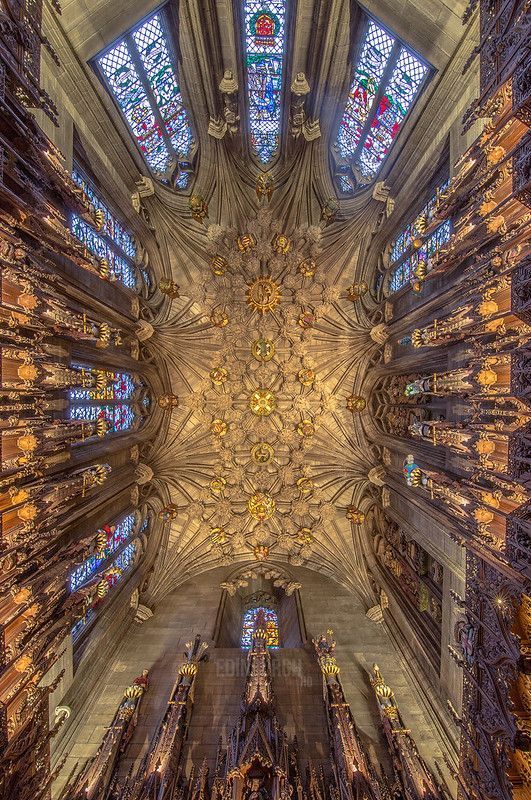
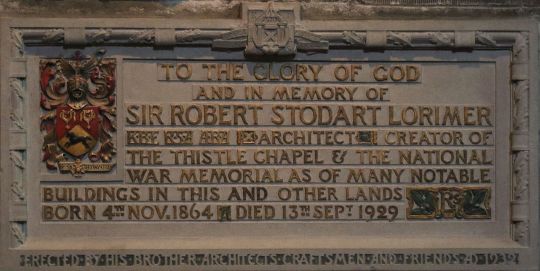

September 13th 1929 saw the death of the architect Sir Robert Lorimer.
Lorimer was born in Edinburgh, the son of James Lorimer, who was Regius Professor of Public Law at Edinburgh University from 1862 to 1890. He was educated at Edinburgh Academy and later at Edinburgh University. He was part of a gifted family, being the younger brother of painter John Henry Lorimer, and father to the sculptor Hew Lorimer. In 1878 the Lorimer family acquired the lease of Kellie Castle in Fife and began its restoration for use as a holiday home.
He began his architectural career in 1885 working for Sir Robert Rowand Anderson in Edinburgh, and in 1889 for George Frederick Bodley in London, returning to Edinburgh to form his own practice in 1891 with his first major restoration commission at Earlshall in Fife for a friend of his parents.
He was influenced by Scottish domestic architecture of the 16th and 17th centuries and the Scots Baronial style of Kellie Castle where he grew up and also the Arts and Crafts movement which flourished in Europe and North America between about 1880 and 1920.
Lorimer designed a series of cottages in the Arts and Crafts style in the Colinton area of Edinburgh, the so-called "Colinton Cottages". Constructed using traditional methods and materials, each cottage included a garden layout and interior design, including furniture, in keeping with the Arts and Crafts concept. By 1900, eight cottages had been built and four others were under construction.The cottages form part of a retirement community run by The Aged Christian Friend Society of Scotland , anyone over 65 can apply to live in the 41 cottages 30 offering single accommodation and 11 double with all the cottages having their own front door, as seen in the 4th and 5th pics.
As his reputation grew the scale of his commissions increased, including major alterations and additions to important houses in various styles, culminating in three entirely new country houses designed in his personal interpretation of Scots Baronial; at Rowallan, Ayrshire, Ardkinglas, Argyll and Formakin, Renfrewshire. Of these, Ardkinglas, on Loch Fyne was the only one built as originally designed and, Lorimer having been given carte blanche, represents his masterpiece.
His important restorations at this time include Lennoxlove House, Haddington and probably his most evocative; at Dunderave, Argyllshire on the Ardkinglas estate. He could take a house of modest character and give it a strong personality, such as Pitkerro, Forfarshire or Briglands, Kinross, particularly where he found the raw materials sympathetic, but he could also disregard existing architectural qualities in a way that modern conservation practice would question.
He was called in to a number of properties to carry out a range of improvements, such as minor alterations, design of interiors and furnishings, work to ancillary buildings, and garden designs and features. A good representative of this sort of work is Hunterston Castle in Ayrshire .
The outbreak of World War I restricted the demand for large new houses and his attention shifted to smaller scale projects, war memorials, and restorations. He already had a reputation as one of Scotland's leading restoration architects following the restoration of Earlshall and Dunderave, and he went on to carry out significant alteration and restoration works at Dunrobin Castle in Sutherland following a fire, and at Balmanno Castle in Perthshire, said to have been the only one of his commissions he would like to have lived in.
Although much of his work, and reputation, was in the sphere of domestic architecture, Lorimer also carried out significant public works. Principal amongst these include his design for the new chapel for the Knights of the Thistle in St Giles' Cathedral, Edinburgh in 1911, as in pic 5
He received a knighthood for his efforts and went on to gain the commission for the Scottish National War Memorial at Edinburgh Castle in 1919.
Lorimer was also responsible for St Andrew's Garrison Church, Aldershot, completed 1927, a large Army church dedicated to the soldiers of the Church of Scotland and kindred churches who lost their lives in World War One. One of his last works (completed posthumously) was Knightswood St Margaret's Parish Church, Glasgow, which was dedicated in 1932.
Lorimer became President of the Incorporation of Architects in Scotland, and it was during his tenure in office that the body received its second royal charter, permitting use of the term 'Royal' in the title. Lorimer was a fellow of the North British Academy of Arts.
He also assembled a collaborative group of artists and craftsmen who, collectively, often contributed to his various commissions and to the manufacture of furniture. He would work with the renowned Edinburgh cabinet makers Whytock and Reid for many years designing furniture.
Sir Robert Stodart Lorimer died following an operation for an appendicitis on this day in 1929, he is buried at The Lorimer family grave, Newburn, Fife, pic six shows a plaque in St Giles to his memory, the last pic is his grave.
10 notes
·
View notes
Photo


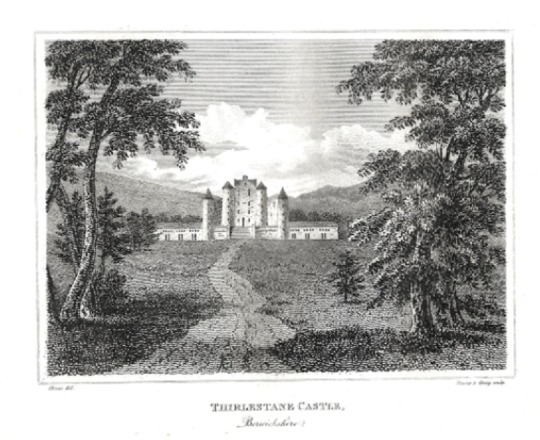

On 24th May 1616 John Maitland, Duke of Lauderdale, Scottish politician was born.
Maitland was Charles II’s deputy in Scotland, he was another in a long line of leading figures in Scotland who “bobbed” between sides, Maitland was originally a fully paid up member of The Covenanters, he even carried the cause into England when Cromwell needed the Scots help to usurp Charles I, he was present at the signing of the Solemn League and Covenant by both Houses of Parliament and the Scottish commissioners on 25th September 1643 in London, he stayed on in London to negotiate the reform of the Church of England.
Born at Lennoxlove House (then Lethington), near Haddington. He married the Countess of Dysart. He was captured at the Battle of Worcester imprisoned in the Tower of London and his estates were forfeited.
They were restored under King Charles II, who made him Secretary of State, a position in which he exercised enormous power, regarded as the ‘uncrowned King of Scotland’. He was the 'L’ in Charles’ so-called 'CABAL’ administration,(“CABAL” stood or the names of the five Privy Councillors Clifford, Arlington, Buckingham, Ashley-Cooper, and Lauderdale) running Scotland without hindrance, despite corruption and intrigue, resisting the reproach of his rivals.
Although having the reputation of being unscrupulous and crude, he was created Duke of Lauderdale in 1672, having inherited the Earldom of the same name from his father in 1645. When not in London or Edinburgh, he made his home at Thirlestane Castle, which he rebuilt and extended. He also refurbished Lennoxlove, the family home in East Lothian.
He compromised with the Covenanters while maintaining the ultimate authority of the King, but this strategy failed leading to the Battles of Drumclog and Bothwell Brig and his fall from power.
John Maitland died at Tunbridge Wells and the Dukedom ceased with him. He is buried in the crypt below the Lauderdale Aisle in St Mary’s Church, Haddington.
Pics are of Maitland, Lennoxlove House, Thirlestane Castle and his crypt at St Mary’s.
9 notes
·
View notes
Photo


On 8th July 1647 Frances Stuart, Scottish aristocrat and mistress of Charles II, was born.
I always debate on whether events like this are truly relevant to be included in a post about Scotland, but I think the interest in the Stuarts in general is enough for this lady called “La Belle Stuart” to put a wee post together about, plus an oddity, you might notice in the second photo gives it a bit of added interest.
Frances Teresa Stuart was born in France the daughter of Walter Stuart (a distant relative of the royal house of Stuart) and his wife Sophia. She was brought up in France at the time the Stuarts were in exile on the continent. After the Restoration she returned with the Royal Court with her mother and was appointed maid of honour to Catherine of Braganza, queen of Charles II.
Samuel Pepys, the diarist, recorded that she was the greatest beauty he had ever seen. Frances had numerous suitors, eventually she eloped with Charles Stuart, a fourth cousin of the king and the 4th Duke of Richmond and 6th Duke of Lennox in March 1667. She fell out of favour at court for marrying without royal consent.
About 1669 she became seriously ill with smallpox and the king reportedly rushed to her bedside and forgave her for marrying. Upon her recovery, she was appointed Lady of the Bedchamber for the Queen.
The king appointed the duke ambassador to Denmark, but Frances stayed in England, managing the estate and business affairs. The duke died in December 1672 and as he had no heir his estates reverted to the Crown. Charles II granted Frances a 1000 pound pension per annum for life. In 1702 Frances arranged to purchase the estate of Lethington. She died that same year leaving her estate to her nephew Lord Blantyre who renamed Lethington Lennoxlove in her honour.
For me the most interesting wee snippets are that Frances had an wax effigy of herself made, which stood by the graveside until the early 19th century when, with several other wax figures, it was moved to the upper Islip chapel in Westminster Abbey, by her side is an African Grey parrot, who died a few days after her, it was her “companion” for 40 years, I have visions of it sitting on her should saying “pieces of eight!” Anyway the bird was stuffed and is perched beside her in the chapel, it is perhaps the world's oldest stuffed bird and looks quite the thing sitting next to her effigy don’t you think?
61 notes
·
View notes
Photo
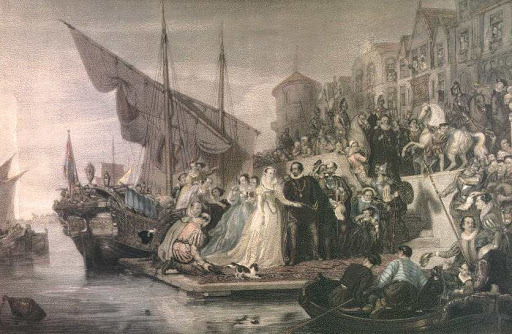

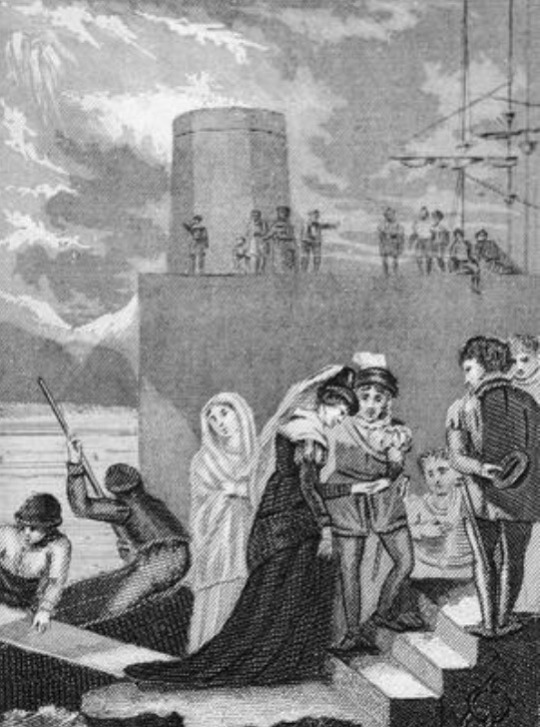
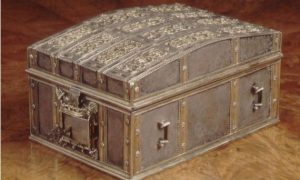
On the 8th of February 1587 Mary I of Scotland climbed the scaffold at Fotheringay Castle her final steps in a turbulent 44 years as she was led to a block where she was beheaded.
Part One.
I know some people there are some people who too easily shout about her judicial murder and blaming The English, but you have to look at what happened to her in Scotland, for we as a nation cannot absolve ourselves of blame for what happened to her.
So I am going to split this post into two, or maybe even three so you can get an idea of the background
In the middle of June 1567, almost 20 years before her death Mary was imprisoned at Loch Leven, after the non event “Battle of Carberry Hill” by the Scottish Lords who were in charge of the country back then, one of them her own half brother James Stewart, Earl of Moray.
On 24th July two of the Lords of the Congregation arrived at Lochleven. Lord Ruthven and Lord Lindsey brought an ultimatum - abdicate the throne or die. They threatened to cut her throat if she refused to sign a Deed of Abdication. Mary signed. Her baby son would become king - with Mary’s half brother, the Earl of Moray, acting as regent.
If Mary had not escaped from the Island the following May what would have been her fate? The Lords would have eventually found a way to get rid of her, by foul means or by a rigged trial implicating her in the death of Darnley.
Even during her first few months in England she was not out of danger from the Scots, who either had forged, or at very least, presented Queen Elizabeth with the Casket Letters. These were eight letters found in the casket were allegedly written by Mary to Bothwell and one was said to implicate the couple in the murder of Mary's second husband, Henry Stuart, Lord Darnley, in February 1567. Elizabeth I ordered a commission to investigate the matter of Mary's involvement in Darnley's murder and on the 14th December 1568 the letters were produced at the Royal Commission as proof against Mary.
At York, where the commission took place, Mary was refused the right to be present, though her accusers, including Moray, were permitted to be present, imagine being so caught up with your religion and the quest for power you would try, not for the first time to cause harm to your sister............
Years later in 1582 the Douglas family made attempts to negotiate for Mary's return to Scotland, not as monarch, you have to understand they wanted her out of the way, she would have been tried and probably executed for her supposed part in Darnley’s murder.
By this time the casket letters were in the possession of William Ruthven, 1st Earl of Gowrie, another rogue of a man! If you follow my historical posts you will know that same year he was involved in a plot that involved kidnapping Mary’s son James VI in what became know as The Raid of Ruthven. The premise of this further intrigue was to lessen the influence of French and pro-Catholic policy, and to prevent or manage the return of Mary from England.
By this time Mary had seen copies of the letters and dismissed them as forgeries. The originals of the letters are thought to have destroyed in 1584 by James VI. Copies exist; one is in French, and the others are translations from the French into Scots and English. The nature of these documents – authentic, forged or only partly forged – has been the subject of much discussion for more than four hundred years. The Casket itself survives and is on display at Lennoxlove House in East Lothian.
So while Mary was being held in English Castles efforts were being made in Scotland to further sully her name and do her harm.
Pics are Mary’s landing at Leith on her return to Scotland in 1561, her escape from LochLeven Castle, less than seven years later, stepping onto English soil at Workington after The Battle of Langside May 1568 and THE Casket, the letters were held in.
25 notes
·
View notes
Photo

On 24th May 1616 John Maitland, Duke of Lauderdale, Scottish politician was born. He was Charles II's deputy in Scotland.
Born at Lennoxlove House (then Lethington), near Haddington. He married the Countess of Dysart. He was captured at the Battle of Worcester imprisoned in the Tower of London and his estates were forfeited. They were restored under King Charles II, who made him Secretary of State, a position in which he exercised enormous power, regarded as the 'uncrowned King of Scotland'. He was the 'L' in Charles' so-called 'CABAL' administration,("CABAL" stood or the names of the five Privy Councillors Clifford, Arlington, Buckingham, Ashley-Cooper, and Lauderdale) running Scotland without hindrance, despite corruption and intrigue, resisting the reproach of his rivals. Although having the reputation of being unscrupulous and crude, he was created Duke of Lauderdale in 1672, having inherited the Earldom of the same name from his father in 1645. When not in London or Edinburgh, he made his home at Thirlestane Castle, which he rebuilt and extended. He also refurbished Lennoxlove, then Lethington, the family home in East Lothian.
He compromised with the Covenanters while maintaining the ultimate authority of the King, but this strategy failed leading to the Battles of Drumclog and Bothwell Brig and his fall from power. He died at Tunbridge Wells and the Dukedom ceased with him. He is buried in the crypt below the Lauderdale Aisle in St Mary's Church, Haddington.
10 notes
·
View notes
Photo
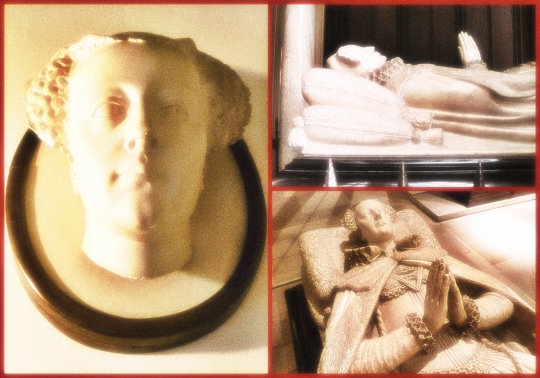
Mary, Queen of Scots was executed on the 8th of February, 1587, some historians point out that her execution was what led to the Anglo-Spanish war that dragged on for decades until the Kings of Spain and England, who inherited this from their predecessors, put an end to it via a treaty.
Initially, Mary Queen of Scots was buried at Peterborough Cathedral and given a Protestant funeral service. When her son James VI of Scotland became I of England, he reburied his mother at Westminster Abbey in the chapel next to the joint tomb of her fellow rival (Queen Elizabeth I of England) and her sister (Mary I of England).
In this collage, I included a copy of her death mask (which is currently located at Lennoxlove House) at Falkland palace in Scotland. The first tomb on the upper left hand corner is of that of Mary Stuart's at Westminster Abbey, the one on the bottom is also the same, only the picture was taken from above.
44 notes
·
View notes